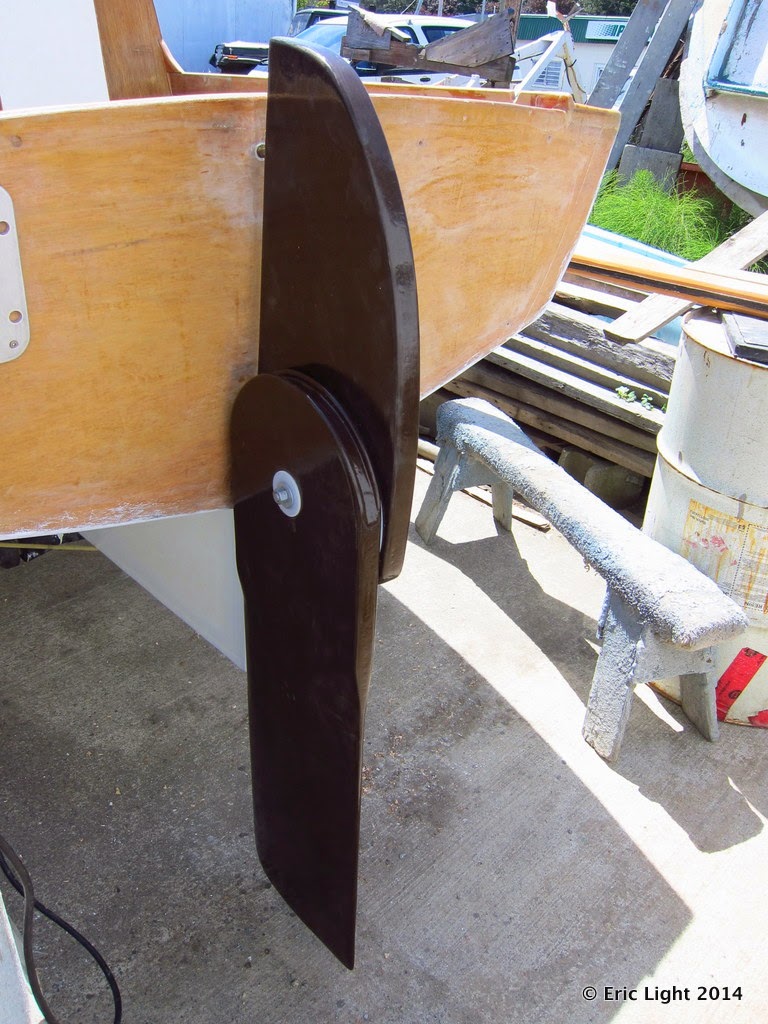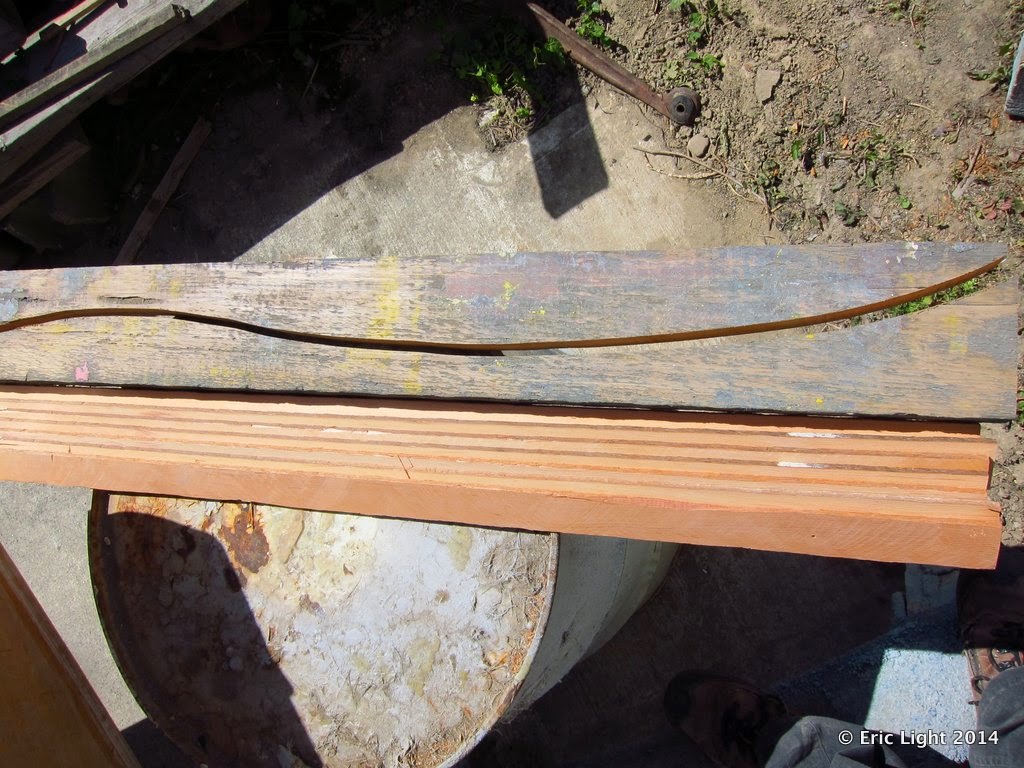Cabin interior showing newly painted floors and floorboards. The grey I found is much darker and bluer than what was on her, but I like it:
Finally finished painting the rudder pieces and got them put together. This is the blade in the down position:
The white bit showing below the rudder head above is a piece of one-eighth inch UHMW plastic which will serve as an oversize washer between the two parts. It's already shown me its Achilles heel: a piece of grit got between the washer and the rudder and made a circular score in the wood. Must make sure to clean before re-assembling.
Below is the blade in the up position:
More rudder shots:
 | ||
| Check out the groove for the downhaul to run in! |
Tiller!
Finally got to cutting the basic shape out of the tiller.
Not sure if the after end will stay like that; probably will get some rounding instead of that point at the bottom.The idea is to have a round-shafted tiller with a ball on the end. We'll see how it falls out... Also, I haven't figured out yet where to attach the free ends of the up- and down-hauls for the blade. Under or on the tiller would be best, but the tiller is on the opposite side of the blade in order that the blade can achieve the vertical up position. May have to re-assess the value of that. Meanwhile, I'm thinking of leading those lines over top of the transom and down to a cleat on the inside. In that case, for the downhaul not to lift the rudder out of the gudgeons, I'd have to put a pin of some kind through one of the pintles. Something I should do anyway, to keep the rudder from separating from the boat in an upset.
Mast
The mast is now painted. I hadn't realized that it was hollow all the way to the bottom. I didn't like that, so I put a piece of wood in the middle, to just above the pivot pin. Which meant I had to take the pivot pin out. It was very well made and so difficult to extract that it had to be demolished. In its place I installed a piece of ¾" stainless pipe that John Booth gave me. Stronger than ever!You may notice that the cabin top has new paint the same colour as the mast. I've changed my colour scheme slightly. The two-dimensional drawings didn't show the deck, which must be factored in. So the deck will be the same woody colour as the mast and cabin top, and the cabin sides will be white. Because the decks couldn't be white.
Firefly could be a couple weeks away from launch. Except that my eldest daughter and her family are visiting for ten days, so it will be more like three weeks. Really soon!
























